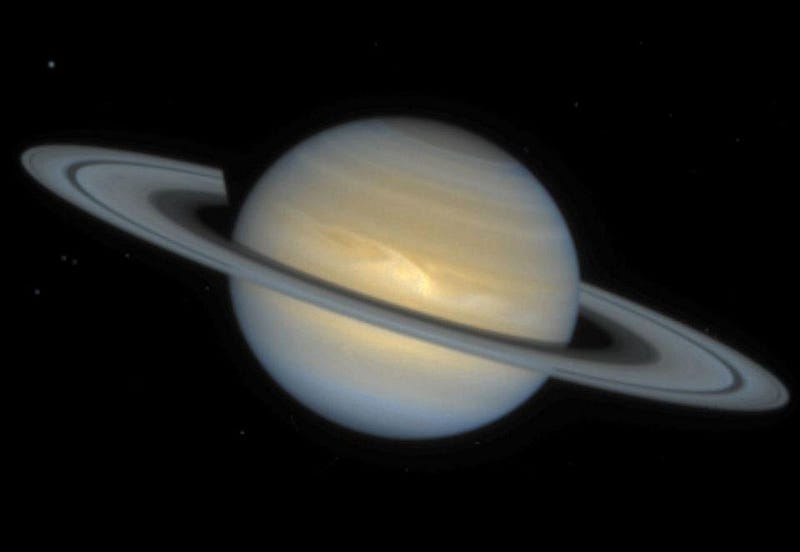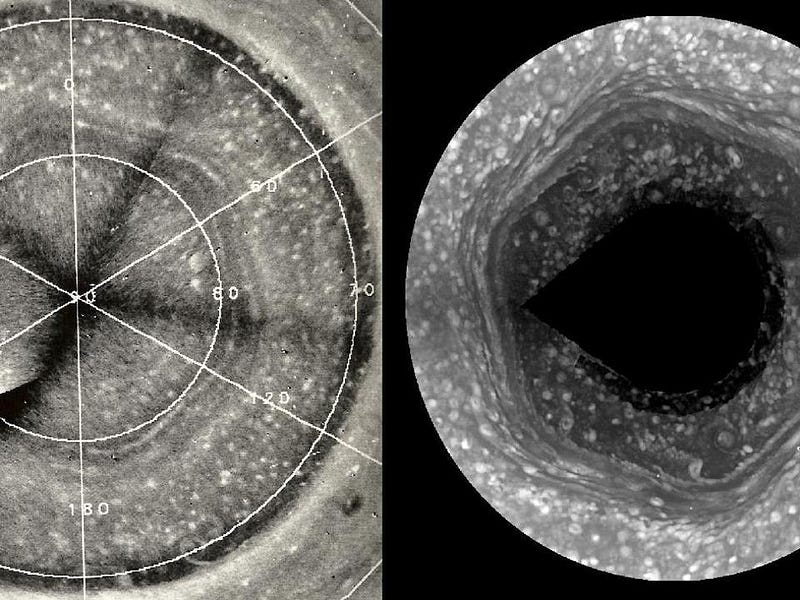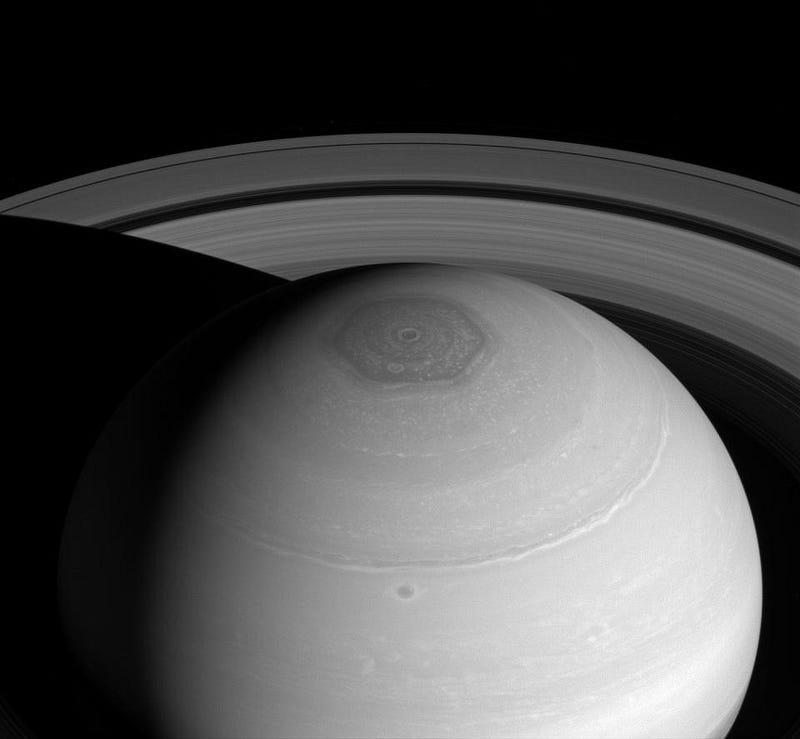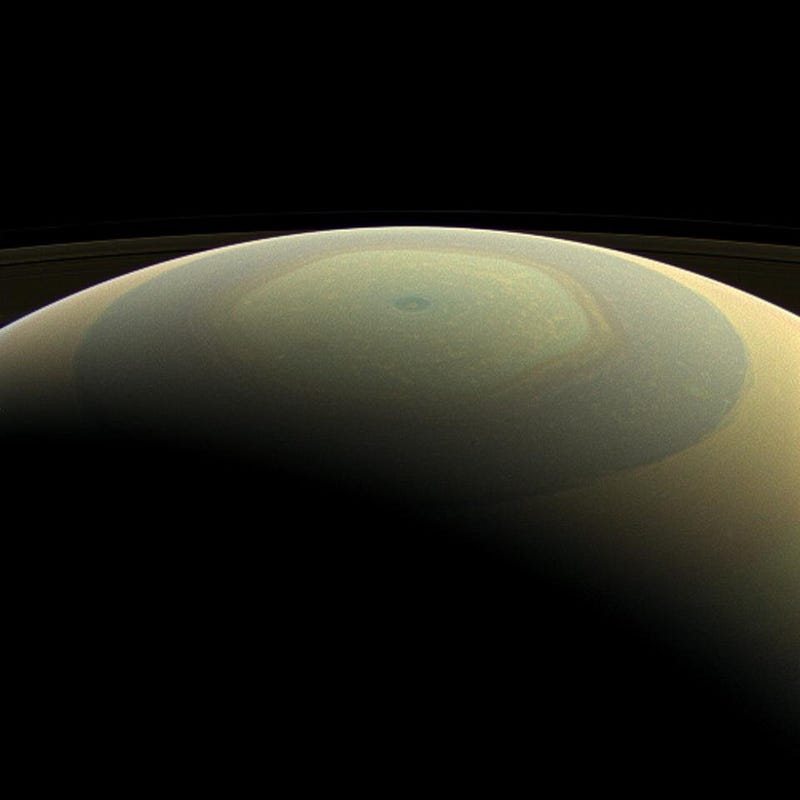Saturn’s hexagon brings new, colorful mysteries

As if the north pole of Saturn weren’t weird enough already.
“Cassini is different — it’s a mission of enormous scope and is being conducted in grand style. It is much more sophisticated than Voyager, … I can’t say it’s got that flavor of romance, though. Voyager was very romantic. Cassini is spectacular.” –Carolyn Porco
Saturn, the farthest naked-eye planet visible from Earth, is famous for its rings, its bands and its yellow color.

Only from spacecraft can we get a good view of its poles, as Voyager first revealed.

Thanks to the Cassini orbiter’s confirmation, the north pole revealed a tremendous surprise: a hexagonal-shaped storm.

Over 32,000 km (20,000 miles) wide, the storm starts at 78º latitude and extends down for some 100 km (60 miles).

Unlike all other atmospheric features, the hexagon does not vary in latitude at all as time passes.

An east-moving air current at 360 km/hr (220 mph) around the hexagon’s outline, combined with lower-latitude airflow, can reproduce the hexagon in computer simulations.
From 2012 to 2016, the hexagon was seen to change color, from bluish to yellow, where it now better matches the rest of Saturn’s color.

Cassini lacks the instruments necessary to measure the composition of the color-changing haze, but there’s a theory behind why.

Saturn’s north pole tilted into sunlight in 2009 and has gotten warmer ever since.

As the polar hazes heat up, their composition and ionization may change, leading to a yellow color in Saturnian summer.

Mostly Mute Monday tells the story of a single astronomical phenomenon or object in visuals, images and video in no more than 200 words.
This post first appeared at Forbes, and is brought to you ad-free by our Patreon supporters. Comment on our forum, & buy our first book: Beyond The Galaxy!





